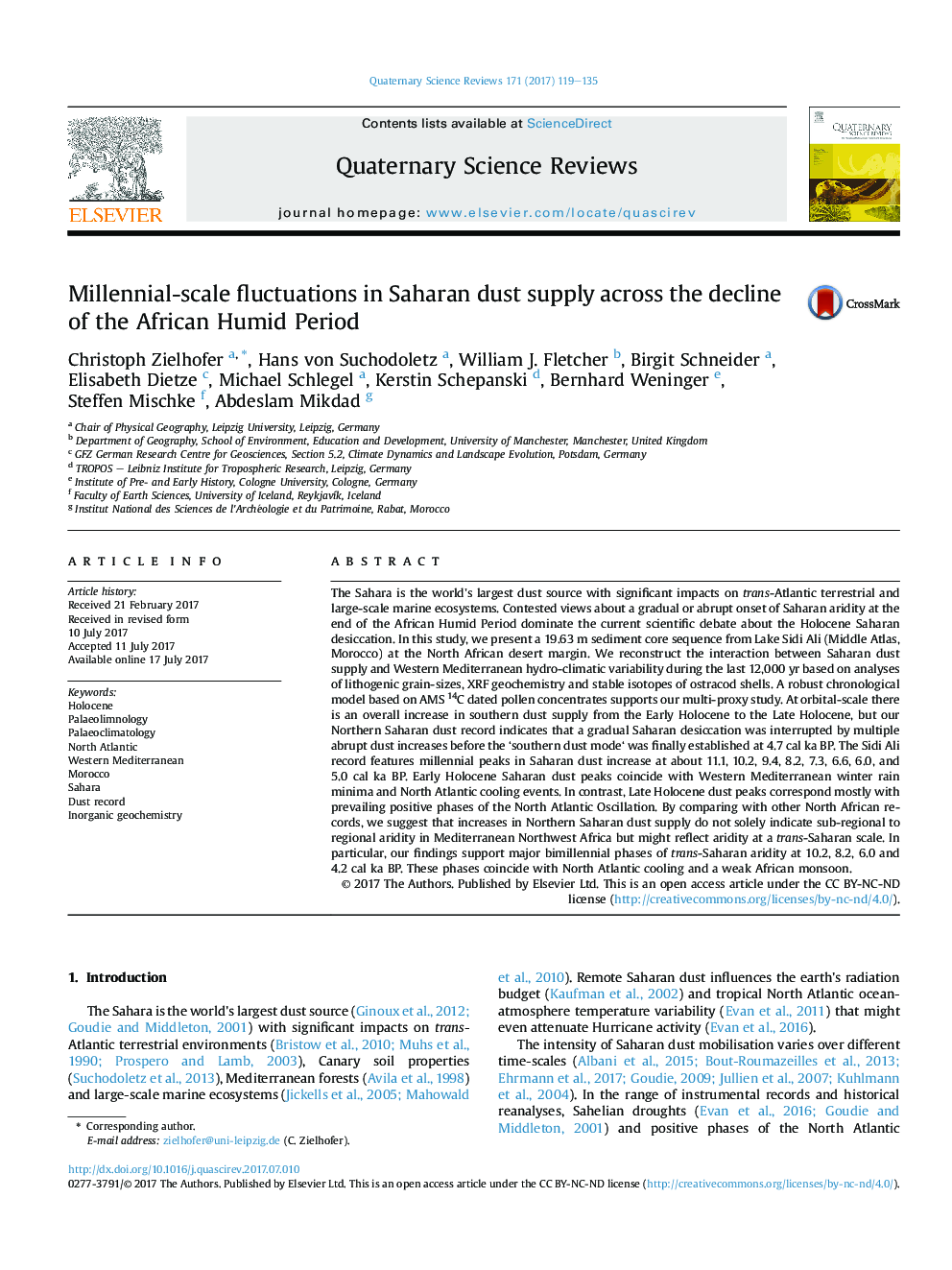| کد مقاله | کد نشریه | سال انتشار | مقاله انگلیسی | نسخه تمام متن |
|---|---|---|---|---|
| 5786591 | 1640764 | 2017 | 17 صفحه PDF | دانلود رایگان |
- Multiple increases in Saharan dust across the decline of the African Humid Period.
- Noticeable Saharan dust signals at 4.2, 6.0, 6.6, 8.2, and 10.2Â cal ka BP.
- Saharan dust increases mostly coincide with Mediterranean winter rain minima.
- The strong dust signal at 4.2Â cal ka BP coincides with humidity in the Middle Atlas.
- Southern dust signals might reflect aridity at a trans-Saharan scale.
The Sahara is the world's largest dust source with significant impacts on trans-Atlantic terrestrial and large-scale marine ecosystems. Contested views about a gradual or abrupt onset of Saharan aridity at the end of the African Humid Period dominate the current scientific debate about the Holocene Saharan desiccation. In this study, we present a 19.63Â m sediment core sequence from Lake Sidi Ali (Middle Atlas, Morocco) at the North African desert margin. We reconstruct the interaction between Saharan dust supply and Western Mediterranean hydro-climatic variability during the last 12,000Â yr based on analyses of lithogenic grain-sizes, XRF geochemistry and stable isotopes of ostracod shells. A robust chronological model based on AMS 14C dated pollen concentrates supports our multi-proxy study. At orbital-scale there is an overall increase in southern dust supply from the Early Holocene to the Late Holocene, but our Northern Saharan dust record indicates that a gradual Saharan desiccation was interrupted by multiple abrupt dust increases before the 'southern dust mode' was finally established at 4.7Â cal ka BP. The Sidi Ali record features millennial peaks in Saharan dust increase at about 11.1, 10.2, 9.4, 8.2, 7.3, 6.6, 6.0, and 5.0Â cal ka BP. Early Holocene Saharan dust peaks coincide with Western Mediterranean winter rain minima and North Atlantic cooling events. In contrast, Late Holocene dust peaks correspond mostly with prevailing positive phases of the North Atlantic Oscillation. By comparing with other North African records, we suggest that increases in Northern Saharan dust supply do not solely indicate sub-regional to regional aridity in Mediterranean Northwest Africa but might reflect aridity at a trans-Saharan scale. In particular, our findings support major bimillennial phases of trans-Saharan aridity at 10.2, 8.2, 6.0 and 4.2Â cal ka BP. These phases coincide with North Atlantic cooling and a weak African monsoon.
Journal: Quaternary Science Reviews - Volume 171, 1 September 2017, Pages 119-135
